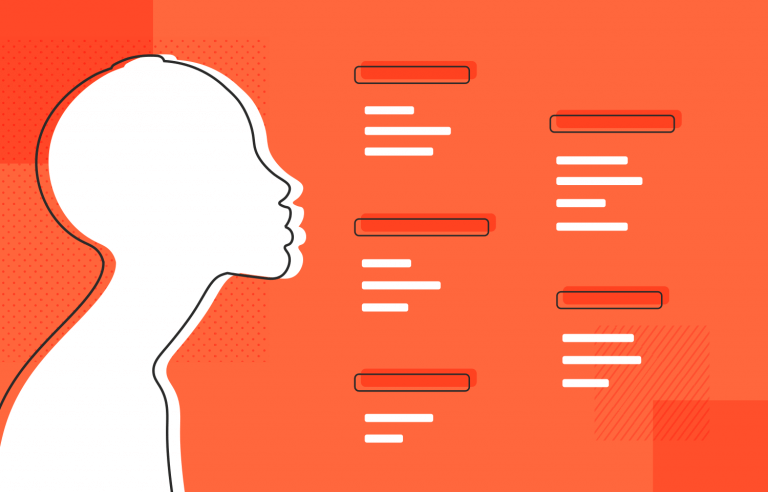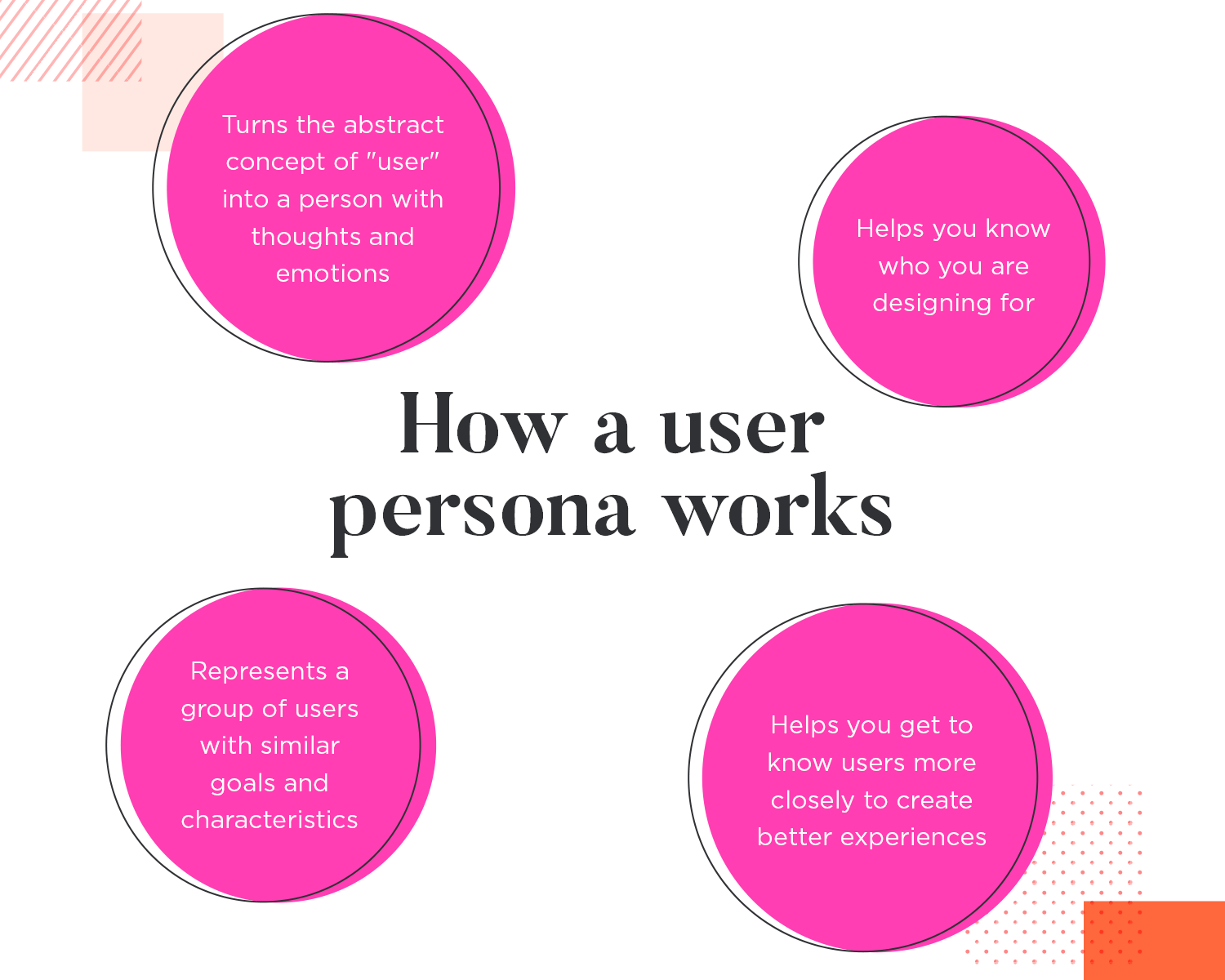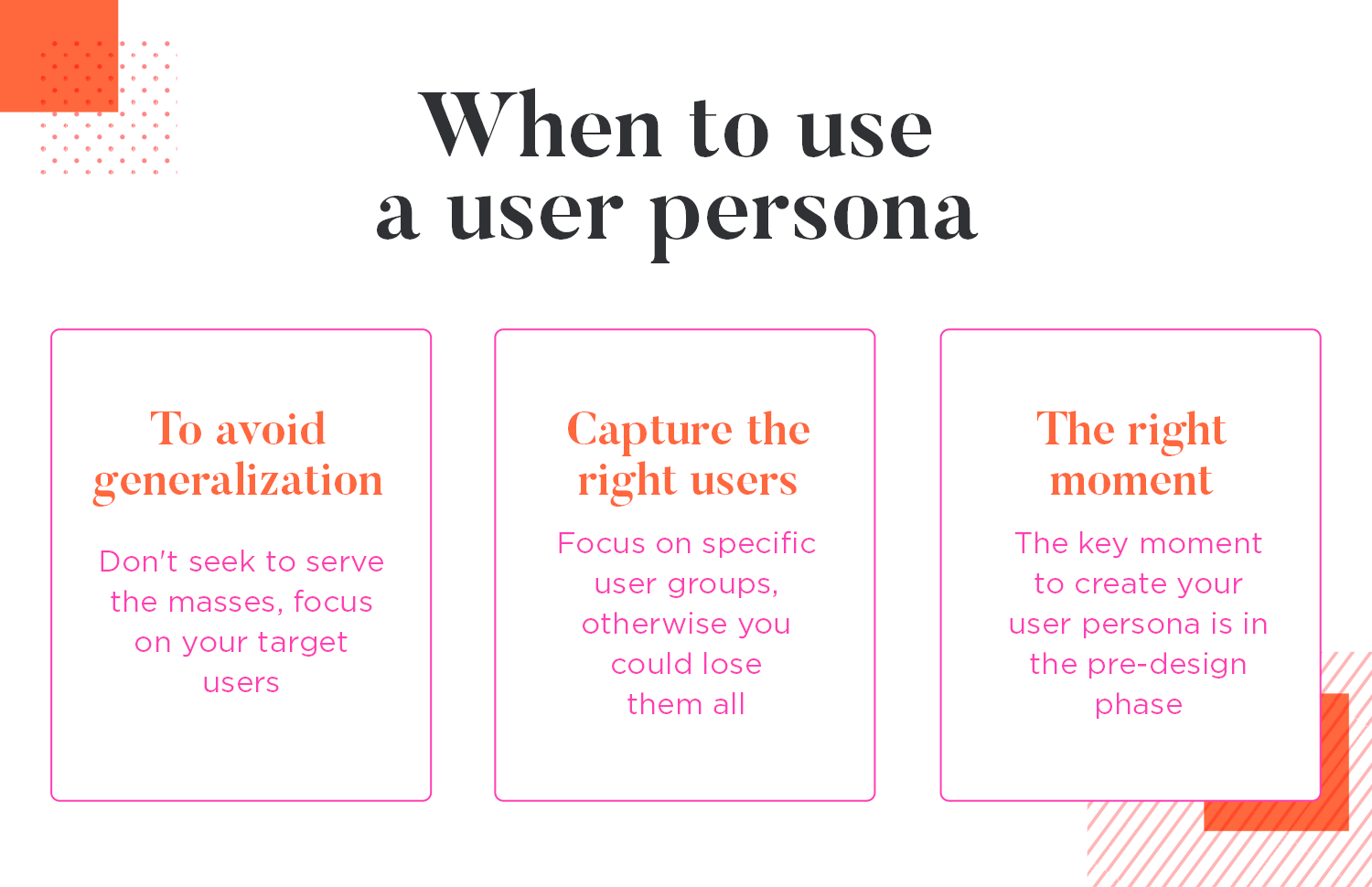

Back right up. Who are we designing our products for again? No one has all the sure-fire answers to designing a wildly successful product, but there are methods out there that are definitely more likely to help you do it. One of those methods includes knowing who you’re designing for in the first place by creating user personas.
This post will explore how user personas can act as a design compass while using your wireframe tool, along with the steps for creating one. You’ll also find some great tools to quickly and easily put one together!
Table of ContentsThe user persona was developed in the 90s and continues to be a key tool for gaining insights into a product’s target audience, their habits, and preferences. It’s widely used by UX design teams and marketing departments across the world.

They are representations of your app or website’s user base segments. They act as benchmarks for design and help teams create the optimal user experience. These are fictitious profiles based on the type of people who are the main users of your app.
The user persona normally consists of both a fictional name and a picture of the person. This is followed by a short bio, along with a description of their age, gender, occupation, hobbies, likes and dislikes, which are non-fictional and based on real aggregated data.
It’s like a character in a story, turning the abstract idea of “the user” into a relatable person with thoughts, feelings, and emotions. This helps teams remember who they’re designing for, especially since users of other products might not be the same as those using your own. These personas represent groups of users who share similar traits and goals, guiding the design process to create the best user experience.

In a big company, user personas make sure that design decisions actually fit what users need, not just what the business wants. When teams use these personas, they can create designs that really click with the people they’re meant for.
Picture hanging user persona profiles on the office wall, uploading them to UX research tools, or emailing them as PDFs for colleagues to check out. This keeps everyone focused and the product on track. These personas serve as a guide, making sure all design decisions are centered around the user, leading to a more user-friendly product.
Let’s say you’re designing a cooking app that helps users find and create healthy recipes. Before you dive into the design, you’d want to develop a user persona to represent your main audience – maybe it’s busy people who are into fitness and wellness and prefer quick, nutritious meals. Doing this upfront saves you time and ensures your app is perfectly tailored to their needs.

Now, you might think about adding a survey feature when users first download and open the app. This survey could ask them about their lifestyles, hobbies, exercise routines, weekly budget, and so on. While this seems like a good idea, it can actually slow things down and frustrate users who just want to get to the recipes. For the user, it means the added interaction cost of actually filling in the survey and answering the questions, instead of getting straight into what they downloaded the app for: recipes!
You then realize that the time to do the survey was before the design even started. User onboarding must be quick, otherwise you risk losing them. The worst part is that they might even be your ideal users. You don’t want to lose these users by trying to cater to the masses because it’s precisely these users that will generate the most revenue for your product.
That’s why you should always create your user persona before the design begins, not after. Use it during the design stage, not in the development stage. Sticking to this rule will save you time and money and ensure your product resonates with your users. Even your MVP should be tailored to the right ones.
You can learn more about the role of user personas in any of these awesome UI UX design tutorials.